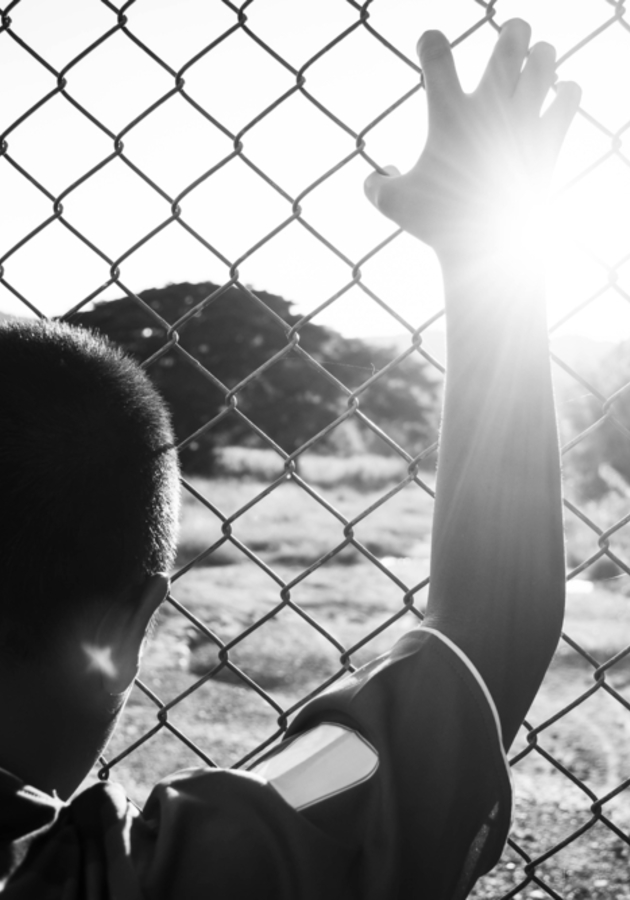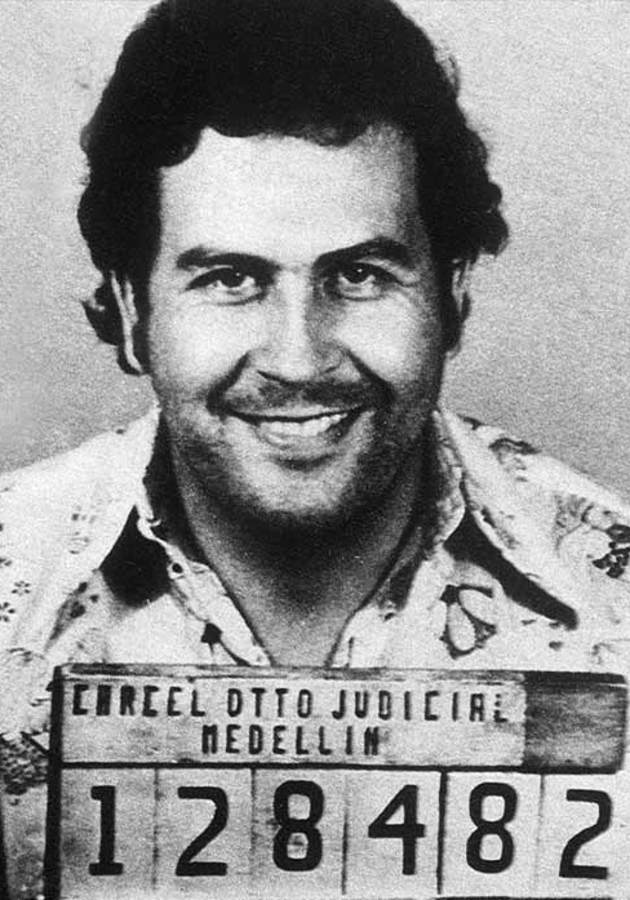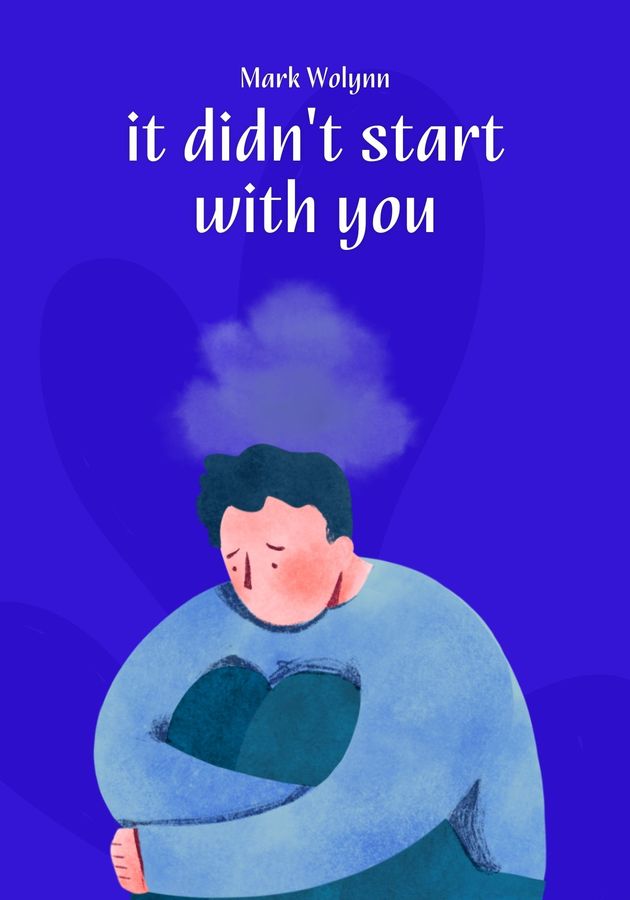American author and journalist Ta-Nehisi Coates is sometimes described as “the single best writer on the subject of race in the United States.” Hailed by Nobel Prize-winning novelist Toni Morrison as “required reading,” Coates’ second book, “Between the World and Me,” won the National Book Award for Nonfiction in 2015 and was a finalist for the 2016 Pulitzer Prize.
Emulating the structure of James Baldwin’s “The Fire Next Time,” the book takes the form of a three-part letter addressed from the author to his 15-year-old son, Samori. The first part recounts Coates’ experiences as a young African American man, the second talks about his life after the birth of Samori, and the last one narrates the author’s visit of Mable Jones, the grieving mother of a mistakenly murdered friend of Coates. Get ready to hear more about all of these things!
Naming “the People”
The letter to Samori begins with a description of an event from the Sunday before, during which a host of a popular news show asks Coates what it meant to lose one’s body. “Specifically,” the author says, “the host wished to know why I felt that white America’s progress, or rather the progress of those Americans who believe that they are white, was built on looting and violence. Hearing this, I felt an old and indistinct sadness well up in me. The answer to this question is the record of the believers themselves. The answer is American history.”
Though Americans deify democracy almost as much as God, most of American history is tremendously undemocratic. In fact, the great country of America exists in large part due to the fact that part of its population was never given the chance to exist. When President Lincoln declared, back in 1863, that the battle of Gettysburg must ensure “that government of the people, by the people, for the people, shall not perish from the earth,” he didn’t have Coates’ great-grandfather in mind. According to the laws of the time, Coates’ grandfather – simply and brutally put – wasn’t considered a person, wasn’t a constituting part of “the people.”
“Race is the child of racism, not the father,” writes Coates, evoking English Romantic poet William Wordsworth. “And the process of naming ‘the people’ has never been a matter of genealogy and physiognomy so much as one of hierarchy. Difference in hue and hair is old. But the belief in the preeminence of hue and hair, the notion that these factors can correctly organize a society and that they signify deeper attributes, which are indelible – this is the new idea at the heart of these new people who have been brought up hopelessly, tragically, deceitfully, to believe that they are white.”
The American Dream is deeply rooted in violence
Put yourself in the shoes of teenager Renisha McBride, who was shot one November night in 2013 for seeking help. Think of Marlene Pinnock, an old, mentally ill African American woman, who was pummeled on the side of a freeway by a California police officer on the first day of July 2014. Just 16 days later, Eric Garner was choked to death for selling untaxed cigarettes, and two weeks after him, John Crawford was fatally wounded by a police officer for browsing in a department store. In perhaps the most tragic event of all, in November 2014, a 12-year-old boy by the name of Tamir Rice was killed by a white police officer for carrying a replica toy gun.
Rice was somebody’s beloved son; Pinnock, someone’s grandmother. McBride was somebody’s first girlfriend, and Garner and Crawford had many friends. All of them were, for lack of a more nuanced word, people. Yet, they weren’t treated as such – and in a country that dubs itself the most democratic in the world. The incongruity between this abstract notion and the real-world destinies of these few African Americans is staggering. But it is also an indelible part of the fabric of American life and a key component of American history.
In fact, the American Dream is built upon this incongruity. Dig deep enough below the shiny promises of success and all those mawkish rags-to-riches Horatio-Alger-like stories, and you’ll find African American bodies, lifeless, whipped, crunched, chomped, trampled. Can you blame African Americans today for living in a constant state of fear, for talking about the extent of the ancient injustice or for fighting against mass incarceration? In time, bullies forget the bullying; but the victims never forget. They can’t: their bodies are scarred by the memory for generations, their minds traumatized by the “why’s” and “what-ifs” of the past.
“The sleeping pill that ensures the Dream”
Remembering the violence that surrounded him when he was young, Coates advises his son Samori to “resist the common urge toward the comforting narrative of divine law, toward fairy tales that imply some irrepressible justice.”
Even though America is violent, he explains, it is the only thing most African Americans have, the one thing they will always return to. However, if they want to change something, they must try to change it actively – and they must do it here, on Earth. They must not allow to be passivized by stories of gods and heroes, by fairytales which claim that things will change by themselves for the better or be magically set right through some divine intervention. Most importantly, they must not allow themselves to be fooled by the so-called “language of intention” that twists the active into passive verbs to vindicate the guilty.
“The point of this language of ‘intention’ and ‘personal responsibility’ is broad exoneration,” warns Coates. “Mistakes were made. Bodies were broken. People were enslaved. We meant well. We tried our best. ‘Good intention’ is a hall pass through history, a sleeping pill that ensures the Dream.” As far as Coates is concerned, Martin Luther King’s call for nonviolent resistance is an upshot of this type of worldview. He prefers the way of Malcolm X and the wake-up call that came from the Black Panthers – just like his father did in the 1970s, eventually becoming a local captain of their Party.
Nowadays, Coates’ father works as a research librarian at Howard University, the place where Ta-Nehisi (Ta-nah-HA-see) finally discovered his own identity a few decades ago. Dubbing Howard his Mecca, Coates talks of how it was there that he learned everything he now knows of race and racial divisions – or, rather, the artificiality of these notions. “I was made for the library, not the classroom,” he comments. “The classroom was a jail of other people’s interests. The library was open, unending, free.”
During his stint at Howard, Coates met Kenyatta Matthews, another student at the University. At the age of 24, she became pregnant with his child. Nine months later the recipient of Coates’ letter was born. He was named after Samori Touré, a Guinean Muslim cleric who resisted French colonial rule in West Africa between 1882 and 1898 and died in captivity at the turn of the century. So that his struggle be imprinted in Samori’s identity – as it would have been either way.
The murder of Prince Jones
A month after the birth of Samori, Prince Jones – a classmate of Ta-Nehisi and Kenyatta from Howard – was killed by a Prince George’s County police officer. Not in the county, not even in D.C., but somewhere in North Virginia. The officer, working undercover, had been sent out to track a 5’4”, 250-pound drug dealer. However, he eventually shot the 6’3”, 211-pound Prince Jones, just yards in front of his fiancé’s house. There were no witnesses. The charges against the officer were dropped for no reason whatsoever.
Coates and his wife went to Howard for their friend’s memorial. At the funeral, Ta-Nehisi couldn’t bear the atmosphere of mercy and forgiveness. After all, the police officer was incompetent and dishonest, and Prince Jones was a deeply religious and kind person. Why should anyone forgive the former and not rage in calls for revenge for the death of the latter?
With thoughts such as this, Coates moved to New York not long after the murder of Jones. Two months before September 11, he started feeling anxious and “out of sync with the city.” The reality of this feeling became apparent to him on the day of the terrorist attacks. “Everyone knew someone who knew someone who was missing,” he writes. “But looking out upon the ruins of America, my heart was cold. I had disasters all my own. The officer who killed Prince Jones, like all the officers who regard us so warily, was the sword of the American citizenry. I would never consider any American citizen pure.”
How could he? Southern Manhattan was always Ground Zero for blacks. Decades before the terrorist attacks on the World Trade Center, African Americans were terrorized at the exact same place. Their bodies were not only auctioned off in “that same devastated, and rightly named, financial district,” but also buried, nameless and unknown, under the ruins. “Bin Laden was not the first man to bring terror to that section of the city,” Coates writes to his son. “I never forgot that. Neither should you.”
Samori’s experiences with racism
Even before he could be aware of it, Samori experienced how deeply engraved racism is within the fabric of American society. When he was five, he was pushed and disciplined by a white woman at a movie theatre on the Upper West Side. After Coates reprimanded her, a white man intervened. Coates experienced this as “his attempt to rescue the damsel from the beast.” The man had made no such attempt on behalf of his son.
After being shoved by Coates, the white man replied with a sentence more frightening than any blow: “I could have you arrested!” Coates knows what the sentence meant: that white people were still in control, and they had all the power they needed over his and other people’s black bodies. Just like they always had. Even today, African Americans have to prove worthy of the rights the founding fathers thought were self-evident and universal.
“All my life,” bemoans Coates, “I’d heard people tell their black boys and black girls to ‘be twice as good,’ which is to say ‘accept half as much.’ These words would be spoken with a veneer of religious nobility, as though they evidenced some unspoken quality, some undetected courage, when in fact all they evidenced was the gun to our head and the hand in our pocket. This is how we lose our softness. This is how they steal our right to smile.”
These were the things Coates told his son during a visit of the historical sites from the Civil War when Samori was 10 years old. He also told him how, at the onset of that war, the stolen African American bodies were worth $4 billion dollars, “more than all of American industry, all of American railroads, workshops, and factories combined.” And yet, when the war ended, this was suddenly forgotten, and the reunion of the states was built on “a comfortable narrative that made enslavement into benevolence” and “the mass slaughter of the war into a kind of sport in which one could conclude that both sides conducted their affairs with courage, honor, and élan.”
This comfortable narrative was devised so it could reconcile white people with each other. Simultaneously, this “lie of innocence” turned African Americans into stock characters and props. Their alienation today is neither a mistake nor an accident, but was produced by American design. In the United States, Coates bemoans, “it is traditional to destroy the black body – it is heritage.”
One racist act
The man who shot Prince Jones carried with him “the power of the American state and the weight of an American legacy.” He wasn’t the exception. On that fateful September day in 2000, he set out to destroy a black body, just like many before him had a myriad of times before. Prince Jones’ mother Mable knew this much too well. Composed, “lovely, polite, brown,” she was born in Louisiana and had experienced racism firsthand ever since her earliest years. However, she managed to overcome all obstacles, excelling at school, winning a scholarship to Louisiana State University, and becoming one of the first black radiologists in American history.
Noticing her son’s intelligence early on, Mable had hopes that Prince would go to Harvard or another Ivy League School. However, Prince chose to go to Howard instead. He wanted to feel “normal,” and, even more, “to see how broad the black normal really is.” However, the “black normal” in America will always be different from the “white normal.” Because no matter how hard an African American might try to succeed, the shadow of their race will always hang above their heads like a blade. One racist act is all it takes for a black person to lose his or her personhood.
That’s what happened to Solomon Northrup, the author and protagonist of “12 Years of Slave.” He had both means and a family, and was able to live like a human being for a long period of time. But then, one racist act was all it took for his world to turn upside down. “The same is true of me,” Mable Jones told Coates after reminding him of Northrup during their meeting. “I spent years developing a career, acquiring assets, engaging responsibilities. And one racist act. It’s all it takes.” This “one racist act” is the reason why African Americans can only dream the American Dream with fear and anxiety. It can’t be any different: the stuff the Dream is made of is their skin, and it rests on the backs of their stolen bodies.
Final notes
According to A. O. Scott of The New York Times, “Between the World and Me” is not only an important book, but an essential one, “like water or air.” And, unsurprisingly, in addition to being a No. 1 New York Times bestseller, the book was also named one of the 10 best books of 2015 by almost any serious publication.
Further proof of its importance is the fact that it was also ranked No. 7 on the Guardian’s list of “100 Best Books of the 21st Century.” Do you really need another recommendation to read it?
12min tip
“He who controls the past controls the future,” once warned George Orwell. So, do not forget your past – it might be your best weapon against injustice and suffering.





























